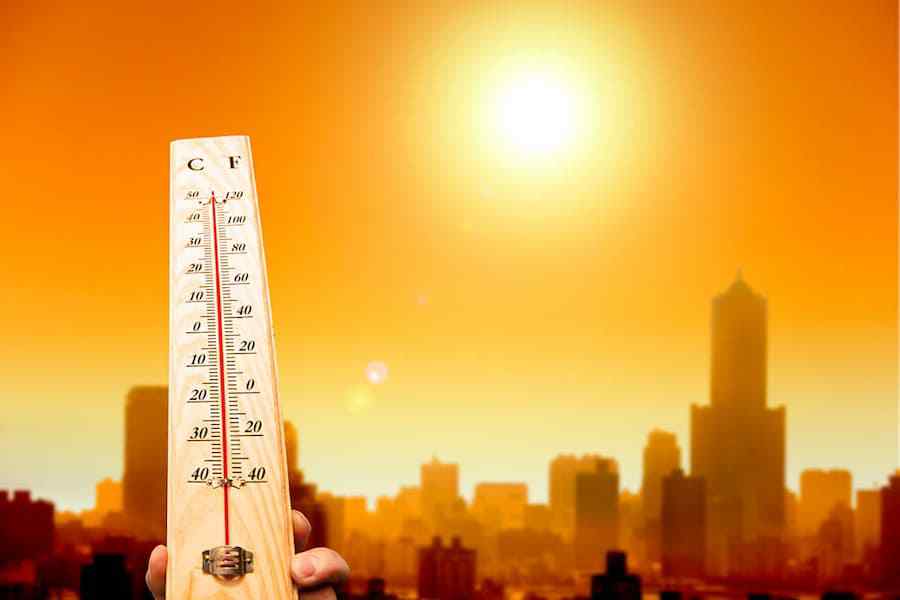The minimum temperature in most of Bengal has increased in the past 50 years, an analysis of daily temperatures recorded in the state between 1969 and 2020 has shown.
The “preliminary analysis” by scientists at Indian Statistical Institute (ISI) Kolkata also showed a rise in temperatures recorded in Alipore and Dum Dum, two weather stations in Kolkata.
Discussions around global warming are not new but this is the first time that a reliable dataset has been analysed and it has emerged that Bengal, and Kolkata, have also warmed in the 50-year period.
The scientists associated with the analysis said the actual degree of rise in temperatures would be published later. They did not want to divulge it immediately.
The Intergovernmental Panel on Climate Change (IPCC), a United Nations panel, said in its sixth assessment report (AR6 Synthesis Report) published last year that “human activities, principally through emissions of greenhouse gases, have unequivocally caused global warming, with global surface temperature reaching 1.1°C above 1850–1900 in 2011–2020”.
The report said: “Global surface temperature has increased faster since 1970 than in any other 50-year period over at least the last 2000 years.”
For the study on Bengal, the temperature dataset was sourced from the India Meteorological Department. It was procured as part of preparations to make a climate action plan for the state. The ISI has sorted and analysed the data to provide indicators to the state environment department, which will prepare the climate action plan.
The impact of a temperature rise will be felt in multiple sectors, including agriculture, energy, fisheries and forests, said scientists.
“We have analysed the daily temperature recorded across 32 weather stations in Bengal between 1969 and 2020. The results showed an increase in minimum temperature for most of Bengal, barring the saline coastal zone,” said ISI professor Debasis Sengupta.
The ISI and state environment department teams divided Bengal into seven agro-climatic zones. These are the Himalayan mountains, Sub-Himalayan plains, Barind zone, Rarh plains, Western plateau, Gangetic Alluvial zone and Saline Coastal Zone.
“We plotted the temperatures recorded on a straight line and found that the line is going up, which shows that there has been a rise in the minimum temperature recorded,” he said.
“The maximum and minimum temperatures recorded in Dum Dum and Alipore have also recorded a rise in this period,” he said.
Sengupta sorted and analysed the dataset with fellow professor Debashis Paul and ISI research scholar Urmisha Chatterjee.
The state environment department had procured rainfall data from 1901 to 2020. The temperature and rainfall datasets have been analysed for indicators of climate change.
The Telegraph had earlier reported that the analysis of south Bengal’s rainfall figures over 60 years from 1961 shows a clear decline in the amount of rain in early monsoon and an increase in rain in the latter part of the season, often stretching into October. The decline in the volume of rain in June and an increase in September and October can seriously impact agriculture, hitting both kharif (monsoon) and rabi (winter) crops, said scientists.
“Rainfall and temperature are the basic climatic parameters to be examined for any indications of climate change. The findings for Bengal are consistent with regional and global trends,” said Anumita Roy Chowdhury, executive director of the New Delhi-based Center for Science and Environment.
Harjeet Singh, an advocate for the cause of developing countries in the annual UN climate change conference, said there was now evidence proving “direct connection between increase in temperatures and rise in climate events like floods, cyclones and droughts”.
“The findings on Bengal and Kolkata send a clear message that we need to step up adaptation and mitigation measures,” said Singh, co-founder of Satat Sampada, a social enterprise promoting environmental solutions.
The AR6 Synthesis Report also said human influence has likely increased the chance of extreme events since the 1950s, including increase in the frequency of concurrent heatwaves and droughts.
Climate change has reduced food security and affected water security.
Threat to public health has also increased manyfold.
“In all regions increases in extreme heat events have resulted in human mortality and morbidity..... The occurrence of climate-related food-borne and water-borne diseases... and the incidence of vector-borne diseases... have increased,” the report said.
The vector-borne disease dengue leads to mortality and illness in Bengal every year, especially during late monsoon and the few months after that.
